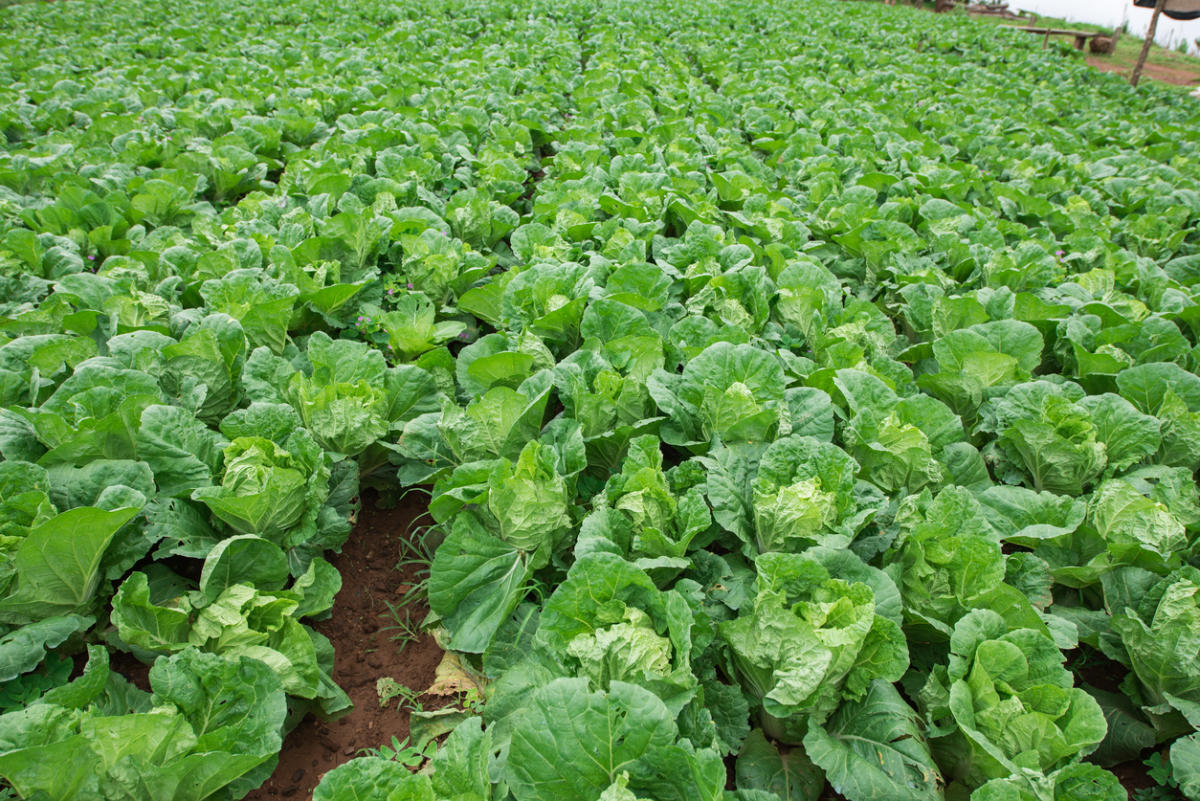 Beijing cabbage is the most unpretentious variety of the cabbage family. It is quite easy to get an early useful crop through seedlings, or by sowing seeds directly in open ground, which makes the process of growing Beijing cabbage simple and quick.
Beijing cabbage is the most unpretentious variety of the cabbage family. It is quite easy to get an early useful crop through seedlings, or by sowing seeds directly in open ground, which makes the process of growing Beijing cabbage simple and quick.
Content
Features of Beijing cabbage
Peking, or as it is also called Chinese cabbage (as the birthplace of China) ripens much earlier than white cabbage. This is an annual cold-resistant, moisture-loving plant for a long day. In the open field, early varieties ripen by the 45th day after sowing. Harvest from mid-season species after 60 days, and from later - after 80. The structure of the vegetable is such that the forks do not have a stalk - the head of cabbage consists entirely of hundreds of tender, cramped rosette leaves, which contain up to 80% ascorbic acid, a significant amount of mineral salts and especially a lot of iron. This composition makes Beijing a product very useful for the human body. The Chinese guest is consumed in a different way: she is good in fresh salads, pickles and hot dishes.
Peking is the earliest type of cabbage.
Cultivating a Chinese woman is usually not a hassle. However, improper agricultural technology can lead to the formation of arrows instead of heads of cabbage with flowers, in which seeds are formed. If Beijing was grown for reproduction, then do not worry. But when the cabbage was grown for food, and instead of neat cabbages they got large yellow inflorescences, then you can forget about the refined taste or attractive presentation.
Cabbage can be thrown out not only grown from seedlings, but also when sown with seeds.
Landing time
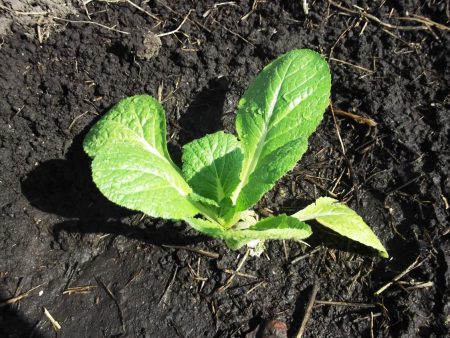 In most cases, the shootings (and hence the loss of yield) lead to incorrect timing of sowing seeds of Beijing cabbage. As already mentioned, Peking is a long-day culture, that is, with a daylight of more than 12 hours, its biological processes are aimed at reproduction (flowering and seed formation). If the sun is not enough, then there is a rapid growth of greenery (what we take as food). It turns out that in order to get edible heads of cabbage, Beijing needs to be sown in spring as early as possible, while daylight hours are short. Or for the autumn harvest, cabbage is planted at the end of summer, when the day begins to shrink. Sowing time is set based on the method of growing vegetables - through seedlings or seeds. If the seedling method is chosen, then sowing seeds must be carried out in late March - early April or in September. For sowing, days from April 10 to April 20 or in the summer from July 19 to August 10 are suitable for sowing seeds into the soil.
In most cases, the shootings (and hence the loss of yield) lead to incorrect timing of sowing seeds of Beijing cabbage. As already mentioned, Peking is a long-day culture, that is, with a daylight of more than 12 hours, its biological processes are aimed at reproduction (flowering and seed formation). If the sun is not enough, then there is a rapid growth of greenery (what we take as food). It turns out that in order to get edible heads of cabbage, Beijing needs to be sown in spring as early as possible, while daylight hours are short. Or for the autumn harvest, cabbage is planted at the end of summer, when the day begins to shrink. Sowing time is set based on the method of growing vegetables - through seedlings or seeds. If the seedling method is chosen, then sowing seeds must be carried out in late March - early April or in September. For sowing, days from April 10 to April 20 or in the summer from July 19 to August 10 are suitable for sowing seeds into the soil.
If you want to get a crop throughout the summer, then sow the seeds in several stages with an interval of 7-10 days.
Conditions for growing cabbage
In addition to the deadlines for the successful cultivation of cabbage, the presence of additional related factors:
- the air temperature should be approximately + 13-20 degrees of heat - this is when the plant's vital process is activated. Sprouts can appear at +5 degrees, however, at an early stage of the growing season, it is optimal to keep seedlings at a temperature of 18 degrees Celsius, slightly lowering the temperature during the formation of heads of cabbage (to avoid flowering);
- humidity should be within 70% on cloudy days and 80% on clear days;
- the soil at the time of planting should fully ripen, that is, reach a temperature of at least 10 degrees, be loose, nutritious and always moistened. Its optimum humidity in early spring is achieved by the presence of snow water. The optimum humidity is 65%.
Cultivation methods
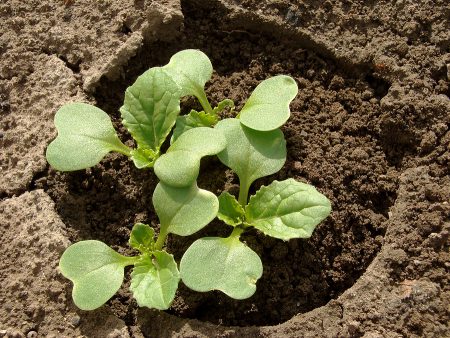 To obtain an earlier harvest, cabbage is grown in seedlings. You can sow the seeds immediately into the ground, but the heads of cabbage will ripen in this case 10-12 days later.
To obtain an earlier harvest, cabbage is grown in seedlings. You can sow the seeds immediately into the ground, but the heads of cabbage will ripen in this case 10-12 days later.
Peking cabbage prefers to grow in sunny, quiet areas with loose nutrient soil, preferably loamy. In too light soil, seedlings dry out, and when grown in dense, heavy soil, they become ill with a keel. Fertilize the soil in the fall, supplying the earth with organic matter and minerals. Acidity for Beijing is not dangerous, but salinity leads to inhibition of plants. Excessive acidity is diluted with lime, and salinity with sawdust or straw. Since the main product of the eastern vegetable is leaves, the plant needs a lot of nitrogen to form them. It is recommended to plant the crop after cucumbers, zucchini, onions, tomatoes and legumes, since it is these crops that leave enough nutrition in the soil.
Seed cabbage
One of the characteristics of the Chinese woman is its rapid germination. In addition, she is not afraid of cold weather, so growing by sowing seeds in open ground is the best for this type of cabbage.
If at the time of sowing the seeds the air warms up to 10-13 degrees, then seedlings will appear already on 4-5 days. In colder weather, the sprouts will hatch in a week. However, you can not constantly keep seedlings in the cold - so they will give an arrow, not edible foliage. Conversely, if it is too hot, then the plants will bloom.
Experts recommend using the sowing method for the southern regions, where the soil in the middle of spring is already ready for fruitful work. In places with colder climates, it is preferable to grow Beijing through seedlings.
If you want to feast on Peking cabbage at the beginning of summer, you should choose a variety with early ripening. These include Khibinsky, Asten, Martha, Mandarin, Lenok, ripening already 55 days after the appearance of the first shoots.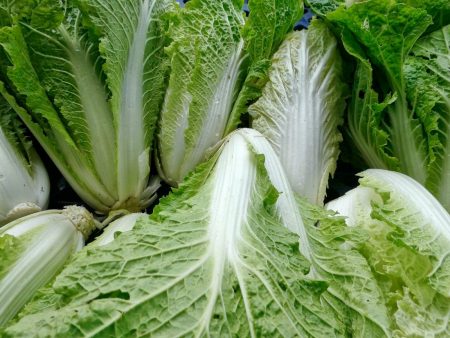
Seeds are sown in long narrow grooves or small holes, if there is no desire to thin out seedlings later. Since cabbage seeds are very small and can easily fall into the spores of the soil, it is better to stamp the bottom of the dimples with your palm. The sowing depth should not exceed two centimeters. Seeds are covered with dry soil, then lightly shed soil by sprinkling. Top soil is dusted with ash or ash - this will protect the earth from quick drying.
The first leaves grow very large and sprawling. Given this, you should place the holes at a distance of at least 30 centimeters from each other. You can immediately place 2-3 seeds in a hole to determine the best seedling and then eliminate the others. To get seedlings as early as possible, the bed with crops needs to be covered with a film.
Although Beijing cabbage is cold-resistant, it does not tolerate prolonged cold weather. Therefore, it is better to keep the area with soil crops until mid-May under shelter, creating the necessary climate for plants.
Summer cultivation
To get a crop in autumn, sowing seeds can be done in the second half of summer. The conditions for sowing and growing remain the same as in the spring cultivation of the vegetable. However, with summer cultivation, it will be necessary to artificially reduce the daylight hours for crops. This can be done using lutrasil. It is also important to observe the water balance of the soil - it must not be allowed that the earth often dries up, as is usually the case in summer. It is supposed to water cabbage in the summer often, every other day.
To obtain seeds, Chinese cabbage is planted during short daylight hours.The temperature for vegetable growth in this case is not important.
Seedling method
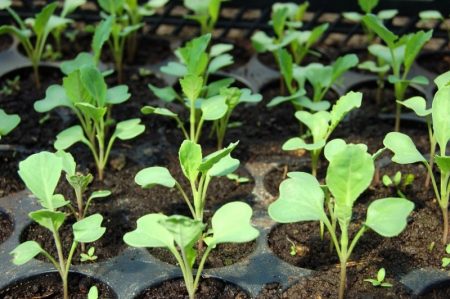 Many farmers practice the seedling method of growing Peking - in this case, a fresh product can be obtained much earlier. But this method also has drawbacks: seedlings do not tolerate picking. Although this problem can be avoided by planting seeds in peat pots, from which transplantation is not required. If sowing is carried out in a seedling tank, it is important to take care of the correct soil. The soil mixture should be loose, aerated. For sowing, it is best to make a mixture of humus, turf, river sand, peat and ash. Seeds are placed in the soil at 1-1.5 cm depth. It is important that the soil is well moistened.
Many farmers practice the seedling method of growing Peking - in this case, a fresh product can be obtained much earlier. But this method also has drawbacks: seedlings do not tolerate picking. Although this problem can be avoided by planting seeds in peat pots, from which transplantation is not required. If sowing is carried out in a seedling tank, it is important to take care of the correct soil. The soil mixture should be loose, aerated. For sowing, it is best to make a mixture of humus, turf, river sand, peat and ash. Seeds are placed in the soil at 1-1.5 cm depth. It is important that the soil is well moistened.
The nursery before germination is placed in a warm and dark place. With the seedling method, sprouts appear already on the third day after sowing. If there is no confidence in the quality of the seeds or if you want to speed up the process of germination, the seeds can be soaked in a growth stimulator before sowing (Epin, Heteroauxin). After sowing, the box on top is covered with a film. As soon as white loops appear, the crops are exposed on the windowsill so that they are well lit by the spring sun. The optimum temperature for the full growth of seedlings should be +18 degrees heat. So that the sprouts do not stretch and do not go in the arrow, the air temperature and humidity should always remain in optimal limits.
Seedlings can produce several crops per year.
After 30 days (by this time up to 5 leaves will appear on the plant), the seedlings are transplanted to the garden. If the weather outside is cool, then the seedlings will have to be tempered. To do this, a week before the transplant, cabbage is regularly walked on the veranda or balcony, so that the seedlings are accustomed to new weather conditions.
Transplanting seedlings is carried out by the method of transshipment, that is, together with an earthen lump on the roots. This will minimize the risk of injury to weak roots. Hardened seedlings take root within 5-7 days. At this time, the soil must be mulched with humus.
Further care
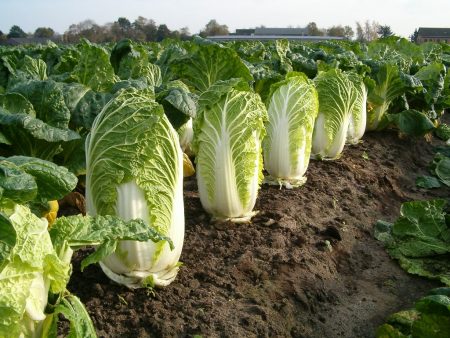 Growing Beijing cabbage is troublesome only in the early stages of cultivation. In the future, the culture will not require any special care measures. For Beijing, a short daylight is important, but it gives a good harvest, growing in a sunny area. The plant loves moisture, but does not tolerate waterlogging. With a lack of water, the heads form small and dry, and excess leads to the appearance of fungal diseases. The irrigation method is suitable for irrigation - folded-wrinkled leaves quickly absorb the main component of their composition, becoming more juicy and sweet. Watering the cabbage should be every three days, spending 500 milliliters per plant. Or moisten the soil once a week, while pouring 2 liters of water on each head of cabbage.
Growing Beijing cabbage is troublesome only in the early stages of cultivation. In the future, the culture will not require any special care measures. For Beijing, a short daylight is important, but it gives a good harvest, growing in a sunny area. The plant loves moisture, but does not tolerate waterlogging. With a lack of water, the heads form small and dry, and excess leads to the appearance of fungal diseases. The irrigation method is suitable for irrigation - folded-wrinkled leaves quickly absorb the main component of their composition, becoming more juicy and sweet. Watering the cabbage should be every three days, spending 500 milliliters per plant. Or moisten the soil once a week, while pouring 2 liters of water on each head of cabbage.
Watering Chinese cabbage is preferably rainwater. It is noticed that from it the leaves are better saturated with moisture, become juicy and crispy.
While the presence of heat is important for other types of cabbage, the Beijing feels comfortable when the degree is at a mark below +20. Given the biological characteristics of a foreign vegetable, it is recommended to cover the garden during times of cold snap and rain. In addition, a covering sheet will protect the cabbage from being hit by a cruciferous fly.
Cabbage is demanding on the quality of the soil - the soil should always remain loose, conduct oxygen and water well. Therefore, one of the most important agricultural techniques in the cultivation of Chinese is loosening, which is started two weeks after transplanting seedlings and 20 days after sowing seeds. Loosen the earth immediately after watering, without waiting for the appearance of a dry crust.The cabbage bed should be completely cleaned of weeds, otherwise they will drown out the growth of an already weak root system. On especially hot days, when the evaporation of moisture is more intense, it is preferable to mulch the earth with wood ash or a thin layer of dry foliage.
Over the entire growing season, cabbage is fed twice. The first top dressing is arranged two weeks after the seedlings are planted on the bed. For Beijing, the presence of a large amount of nitrogen in the soil is important. Root dressing is arranged with a solution of mullein or chicken droppings, herbal infusions. During the formation of the ovaries, the plantings are sprayed with a solution of boric acid. The culture is also demanding for the presence of calcium. This component is introduced during the spring backlog of the soil - eggshells (ground into dust) are placed in the grooves. If in the autumn no fertilizers were applied to the soil, then in the spring it is flavored with potassium sulfate, superphosphate, ammonium nitrate.
Pests and diseases
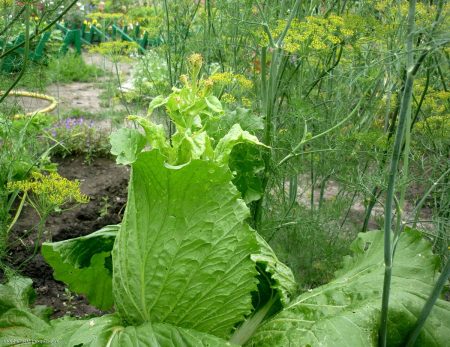 Chinese cabbage in open ground is affected by cruciferous fleas, slugs, cabbage and cruciferous bugs. Most often, pests appear on thickened beds, in places where moisture accumulates. It is desirable to get rid of insects by folk methods in view of the fact that cabbage leaves have the ability to accumulate nitrates. So the close location of Peking to tomatoes, onions and garlic reduces the activity of fleas. From other insects, spraying with infusion of tomato tops helps. Garlic tincture copes well with pests. Careful weed removal, loosening, thinning will help to avoid problems with pests of different levels.
Chinese cabbage in open ground is affected by cruciferous fleas, slugs, cabbage and cruciferous bugs. Most often, pests appear on thickened beds, in places where moisture accumulates. It is desirable to get rid of insects by folk methods in view of the fact that cabbage leaves have the ability to accumulate nitrates. So the close location of Peking to tomatoes, onions and garlic reduces the activity of fleas. From other insects, spraying with infusion of tomato tops helps. Garlic tincture copes well with pests. Careful weed removal, loosening, thinning will help to avoid problems with pests of different levels.
The main crop diseases are blackleg, keel and gray mold. Infections develop most often due to violations of the growing conditions. To avoid the appearance of diseases will help to keep the soil clean and slightly moist, not frequent planting, treatment with fungicides for prevention.
Collection and storage of vegetables
With spring planting, cabbage will ripen by the beginning of summer. During the summer - in September. At the time of ripening, the head has light yellow-green leaves collected in a loose elongated head. The mass of rolled varieties should reach 300 grams. Mature cabbage leaf variety should have 7-9 leaves. Hybrid varieties are harvested when frost occurs. Do not be afraid that the cabbage will freeze: after thawing, it does not lose either marketability or taste. This feature makes it possible to harvest even in November. The first summer harvest is usually not stored for long, and autumn fruits remain marketable for 3-4 weeks. You need to store cabbage in a dark room with an air humidity of more than 70%.
Cabbage can not be stored with apples. The latter secrete a substance that causes wilting of cabbage leaves.
When stored in the refrigerator or on the balcony, cabbage can lie up to 4 months.
Peking cabbage growing tips
Do not use picking when growing seedlings, as it has long been proven that with this technique it is impossible to keep the roots intact. Grow seedlings immediately in separate containers, or place the seeds in the nursery immediately at a respectful distance from each other so that they "stretch" until the moment of planting in open ground.
For early spring planting, leaf varieties are suitable, and for summer cultivation, head varieties. Consider this when choosing seeds.
When soil sowing seeds are placed in the tape method and in the hole. Despite what method you choose, in any case, after a couple of weeks, the seedlings will have to be thinned by removing the weakest shoots.
If you are afraid of shooting, then choose hybrid varieties of Dutch selection - they are not inclined to form arrows.
Conclusion
Every summer resident can grow overseas vegetables on his plot. Yes, Beijing cabbage requires a special approach in leaving, at some points it can be called moody.However, the ability to produce crops in the early stages, coupled with its useful qualities, make Chinese cabbage worthy of allocating a place for it in your garden

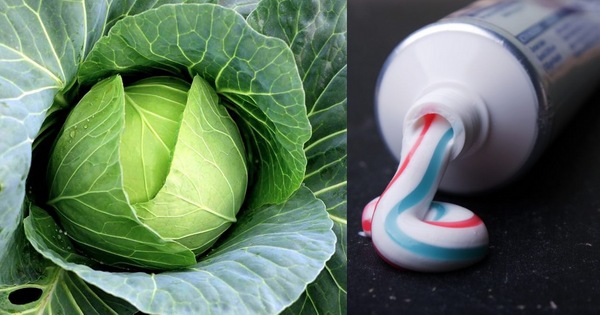
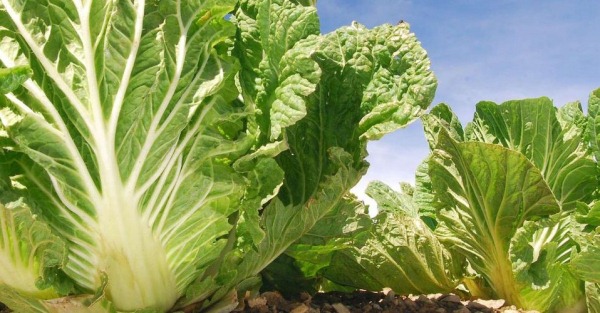
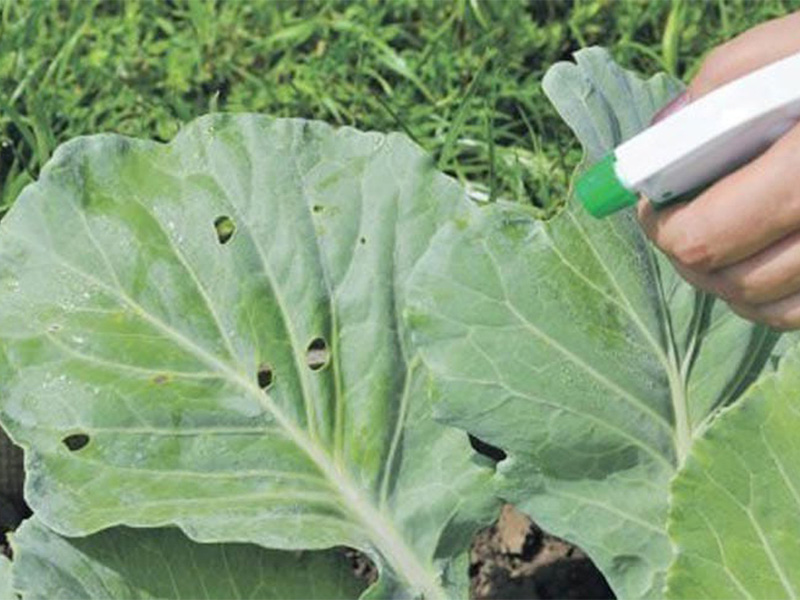
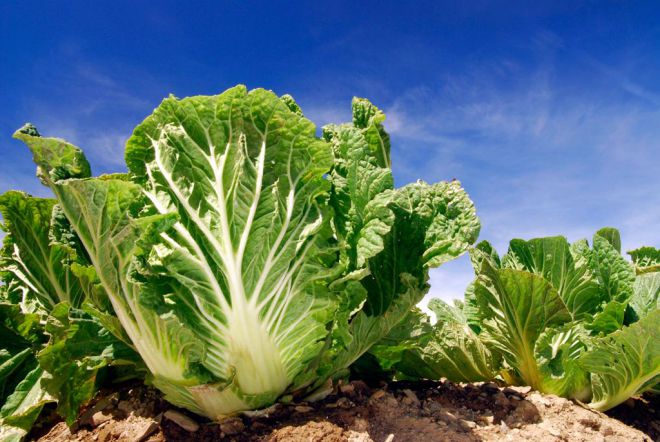 How to grow Chinese cabbage on your site?
How to grow Chinese cabbage on your site?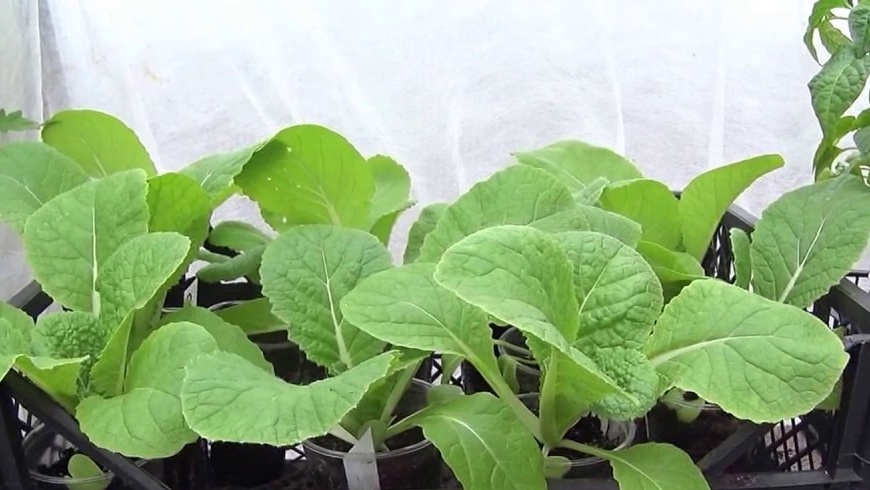 When to plant Chinese cabbage on seedlings in 2024
When to plant Chinese cabbage on seedlings in 2024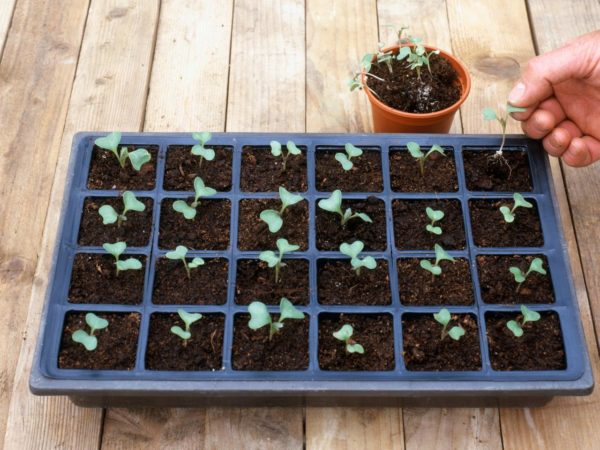 When to sow cabbage for seedlings in 2019 on the moon
When to sow cabbage for seedlings in 2019 on the moon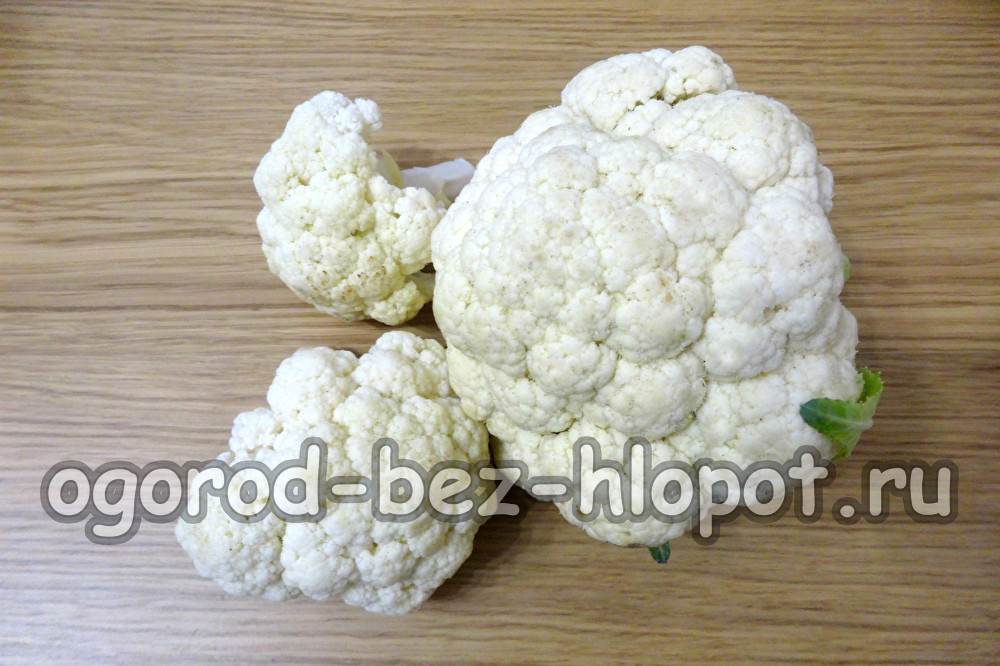 Cauliflower: how to grow large snow-white inflorescences
Cauliflower: how to grow large snow-white inflorescences